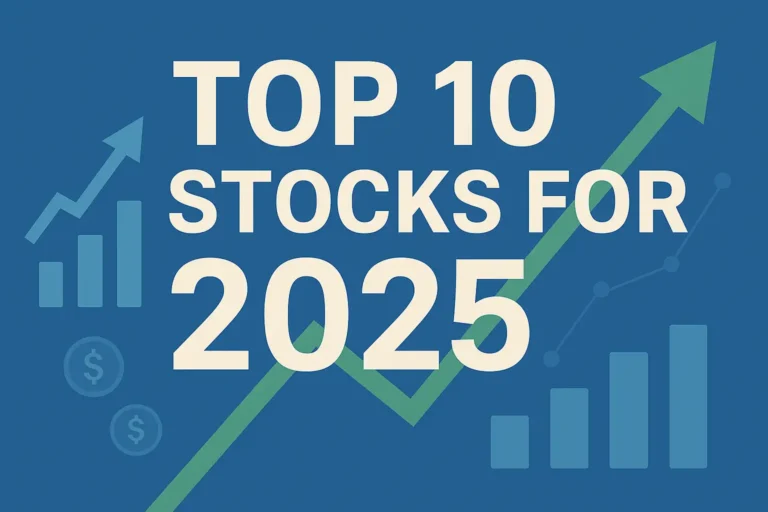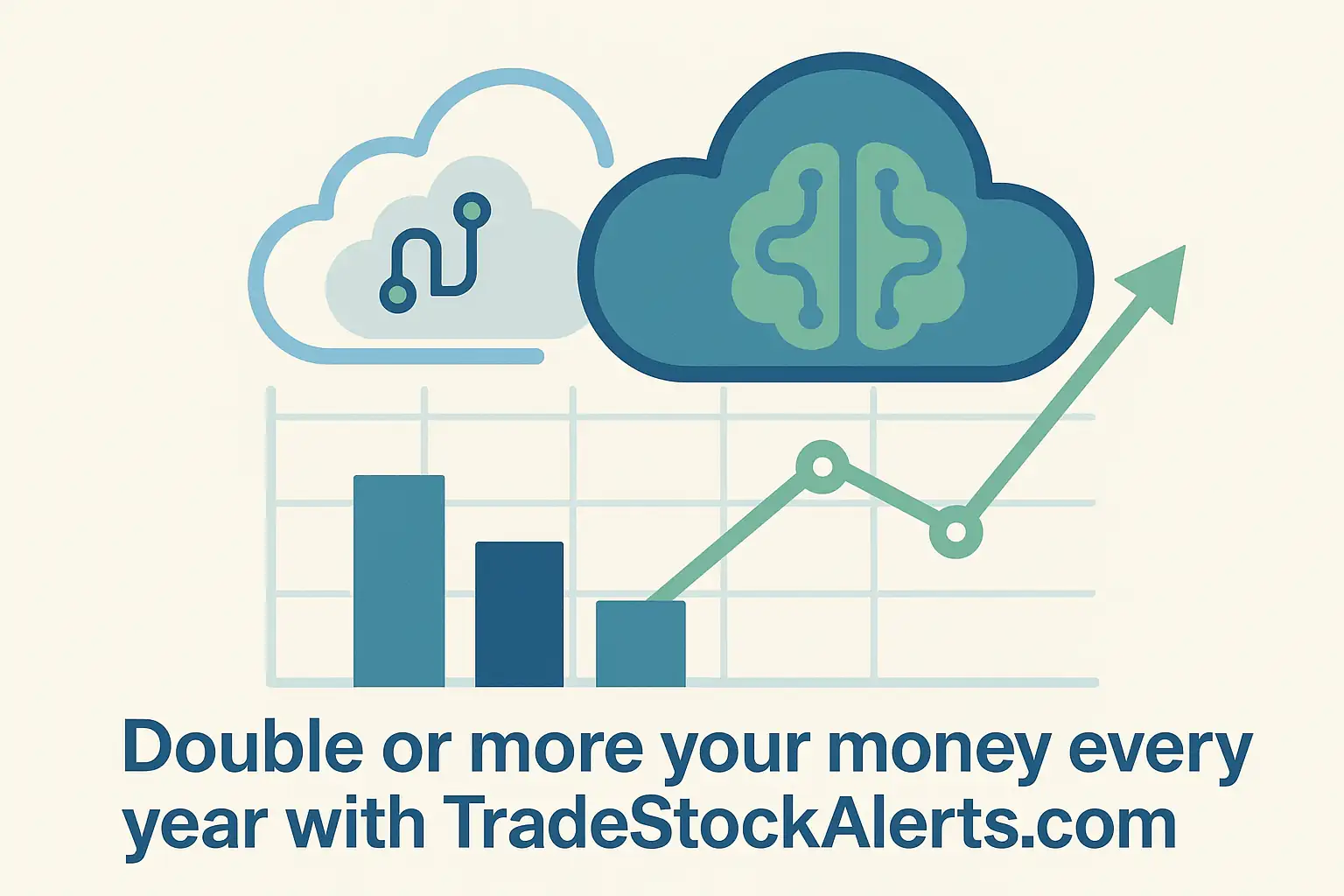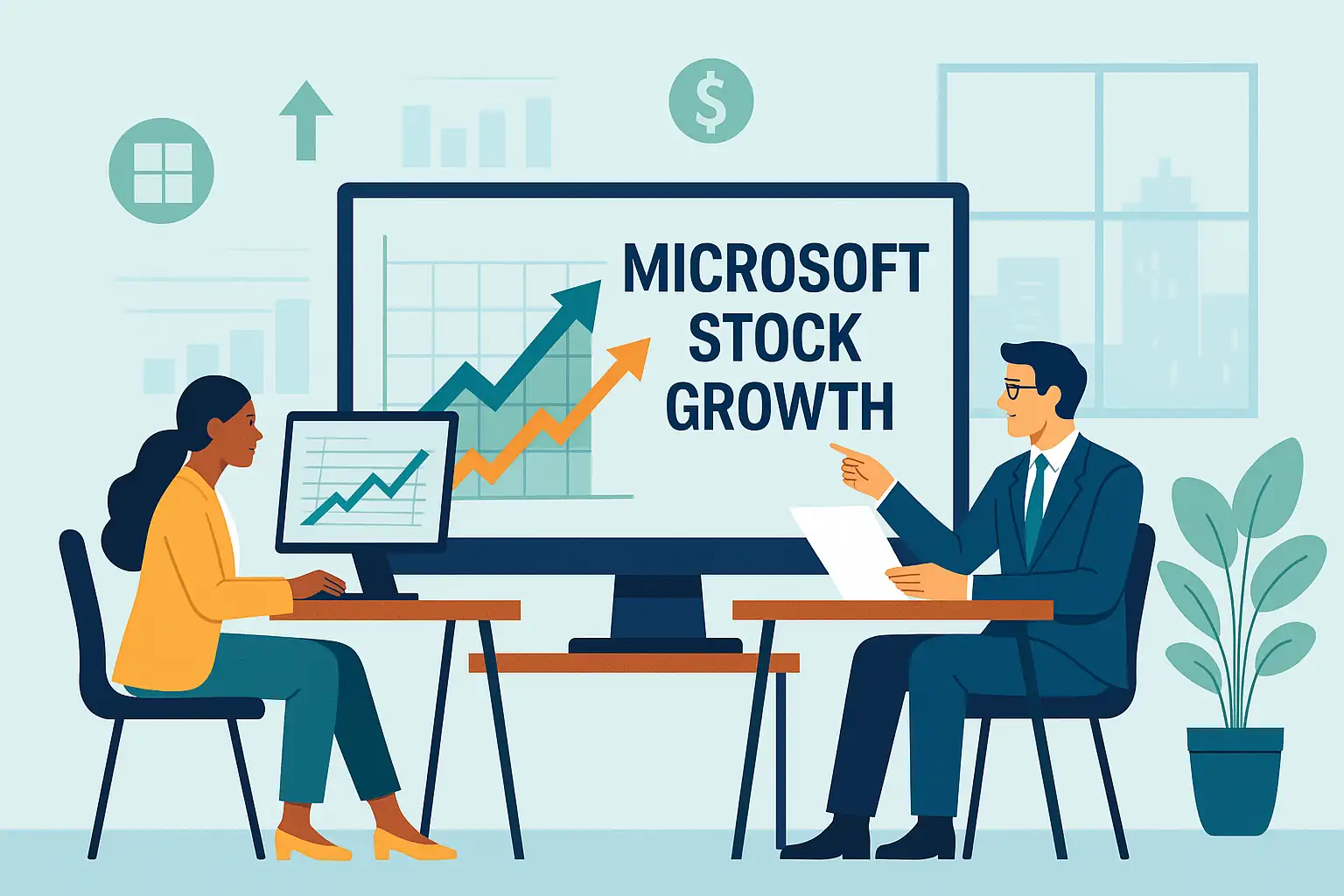
Top 10 Stocks for 2025
Table of Contents
- Introduction & Market Outlook for 2025
- Stock #1: AI & Cloud Computing Leader
- Stock #2: Semiconductor Powerhouse
- Stock #3: Green Energy Innovator
- Stock #4: E-Commerce Titan
- Stock #5: Fintech Disruptor
- Conclusion, Key Takeaways & FAQs
Introduction & Market Outlook for 2025
2025 is shaping up to be a pivotal year for the stock market — one that could rival the tech boom years of the past. Economic recovery, groundbreaking innovations, and geopolitical shifts are converging to create once-in-a-decade investment opportunities.
From AI-driven market transformations to energy sector revolutions, investors who position themselves early stand to capture outsized returns. But as history shows, timing and sector selection are critical.
According to Bloomberg’s Global Market Forecast 2025, sectors like cloud computing, semiconductors, renewable energy, and fintech will be the fastest-growing. These industries are not only projected to deliver strong revenue growth but also align with long-term global economic trends.
Historical Parallel: The 2013–2015 Tech Surge
During the early 2010s, companies like Apple, Amazon, and Nvidia capitalized on mobile, cloud, and data analytics trends. Investors who recognized the momentum early saw multi-bagger returns within just a few years. The same type of opportunity could be unfolding in 2025 — but in new industries with even greater potential.
- Potential for multi-bagger returns within 2–3 years
- Strong alignment with long-term market trends
- Access to fast-growing, innovative companies
- Higher volatility in emerging sectors
- Requires active portfolio monitoring
- Macroeconomic shifts can affect momentum
Key Takeaways
- 2025 is expected to be a high-growth year for multiple industries.
- AI, green energy, and fintech are strategic investment frontiers.
- Historical market surges suggest timely positioning is essential.
Stock #1: AI & Cloud Computing Leader
Artificial Intelligence and cloud computing are not just trends — they are the backbone of modern business infrastructure. In 2025, companies leading in AI-powered enterprise software, scalable cloud storage, and real-time analytics will dominate the market.
One prime example is the transformation seen in recent years with major AI-driven firms. Similar to how Nvidia capitalized on the AI boom, today’s AI & cloud leaders are integrating machine learning into every layer of their platforms, enabling clients to unlock efficiency and revenue growth. This level of integration provides them with a competitive moat that few can match.
For a deeper understanding of AI’s role in financial markets, explore how AI is reshaping the stock market and creating new opportunities for traders.
According to Reuters’ AI Market Projections 2025, global AI spending is projected to exceed $300 billion by 2026, with cloud providers capturing a significant portion of this growth.
Case Study: Nvidia’s AI Surge
Between 2023 and 2024, Nvidia’s market cap doubled as demand for AI training chips soared. This momentum was fueled by cloud providers and tech giants integrating AI into customer solutions — a trend expected to accelerate in 2025.

- Rapid revenue growth driven by AI adoption
- Recurring income from cloud service subscriptions
- High scalability and global market reach
- High R&D costs may pressure short-term margins
- Competitive market with frequent disruption
- Dependence on global data infrastructure
Key Takeaways
- AI and cloud computing stocks are positioned for explosive growth in 2025.
- Early entry could result in multi-year compounding gains.
- Investors should monitor R&D pipelines and cloud adoption rates.
Stock #2: Semiconductor Powerhouse
The semiconductor industry is the engine behind the AI revolution, smart devices, electric vehicles, and the Internet of Things (IoT). In 2025, chipmakers with advanced manufacturing capabilities and strong IP portfolios will be at the center of global technological progress.
Much like the industrial boom of the early 20th century, today’s semiconductor surge is being driven by insatiable demand for computing power. As AI workloads multiply, data centers, autonomous vehicles, and consumer electronics all require faster, more energy-efficient chips.
Investors who have studied the growth trajectory of innovative tech stocks like Tesla will see parallels in how semiconductors are positioned to dominate the coming years.
As reported by Investopedia’s Semiconductor Industry Overview, global chip sales are forecasted to surpass $1 trillion annually by the early 2030s, with AI and EV sectors fueling the fastest growth.
Case Study: AMD’s 2020–2023 Growth Path
Between 2020 and 2023, AMD’s revenue doubled as it captured market share from competitors and expanded into data center processors. This mirrors the trajectory analysts expect from today’s top semiconductor innovators — those securing strategic supply chain partnerships and investing heavily in R&D.

- Critical supplier to high-growth industries (AI, EV, IoT)
- Strong pricing power in advanced chip markets
- Potential for long-term contracts with tech giants
- High capital expenditure requirements
- Geopolitical risks in semiconductor supply chains
- Industry cyclicality affecting short-term earnings
Key Takeaways
- Semiconductors are essential infrastructure for 2025’s tech economy.
- Top players are investing heavily in R&D to secure technological leadership.
- Supply chain resilience will separate winners from laggards.
Stock #3: Green Energy Innovator
Renewable energy is no longer a niche sector — it’s the core of global economic transformation. By 2025, the push for net-zero emissions, electric vehicle adoption, and large-scale solar and wind deployment will create a wave of opportunity for companies leading the green revolution.
Governments worldwide are offering unprecedented subsidies, while private investment in renewable technologies has reached record highs. This combination of policy support and innovation is setting the stage for multi-year growth in clean energy stocks.
For investors aiming to build a balanced portfolio, including ESG components, see how to build a diversified stock portfolio with $1000 that includes green energy plays.
According to the World Economic Forum, renewable energy investment is expected to exceed $2 trillion annually by the end of the decade, with solar, wind, and storage technologies driving the majority of this expansion.
Case Study: NextEra Energy’s Expansion
NextEra Energy, one of the world’s largest renewable power companies, has consistently outperformed the S&P 500 over the last decade. Its aggressive investment in wind and solar infrastructure provides a blueprint for how green energy innovators can secure long-term market dominance.

- Strong government policy support and subsidies
- Rapidly expanding market demand for clean energy
- Technological advances lowering production costs
- Capital-intensive infrastructure development
- Policy changes can affect profitability
- High competition in certain renewable sub-sectors
Key Takeaways
- Green energy is a long-term growth engine for portfolios in 2025 and beyond.
- Storage solutions will be as critical as generation capacity.
- Investors should watch for policy-driven tailwinds and emerging tech leaders.
Stock #4: E-Commerce Titan
E-commerce has evolved far beyond online shopping — it’s now a fully integrated, omnichannel ecosystem. The leaders in this space are combining physical retail presence, same-day delivery, subscription models, and AI-powered personalization to capture market share in 2025.
The pandemic accelerated consumer adoption of online purchasing, but the real growth story lies in logistics innovation, localized supply chains, and global market expansion. E-commerce titans are investing heavily in warehouse automation, AI-driven inventory management, and cross-border payment systems.
Investors should consider the volatility aspects of this sector by reviewing day trading vs swing trading strategies, which can apply to high-growth e-commerce stocks.
According to Forbes’ E-Commerce Trends, online retail sales are expected to surpass $7.5 trillion globally by 2025, driven by mobile-first shopping and AI recommendations.
Case Study: Amazon’s Omnichannel Expansion
Amazon’s shift toward integrating physical retail, such as Amazon Fresh stores, alongside its robust Prime delivery network, demonstrates the power of blending online and offline experiences. This dual approach has helped the company maintain double-digit revenue growth even in competitive markets.
- Strong scalability with minimal physical expansion costs
- Global reach with localized market penetration
- Recurring revenue from subscription-based services
- Regulatory and antitrust scrutiny in multiple regions
- Intense competition driving innovation costs higher
- Dependence on efficient logistics and supply chain resilience
Key Takeaways
- E-commerce remains a high-growth sector with global expansion potential.
- Integration of physical and online retail is a key competitive advantage.
- Regulatory oversight may impact long-term profitability, so diversification is crucial.
Stock #5: Fintech Disruptor
Fintech is rewiring the financial system—from instant payments to AI-driven underwriting and fractional investing. In 2025, the winners will be platforms that combine regulatory-grade compliance, low-cost distribution, and data network effects to scale faster than legacy banks can adapt.
Mobile-first “super-apps” now bundle checking, brokerage, lending, and insurance under one UX. The result? Higher lifetime value per customer and lower acquisition costs through cross-sell flywheels. As AI personalizes risk models and recommendations, top fintechs gain a defensible moat built on proprietary data.
If you’re actively trading fintech names around catalysts (earnings, guidance, product launches), pair this thesis with timely day trading alerts to manage entries, exits, and risk sizing.
Macro tailwinds remain supportive: digital wallets, real-time payments, and AI credit models continue to gain share, according to CNBC’s fintech coverage, with adoption strongest among younger cohorts and emerging markets.
Case Study: From Student Loans to a Full-Stack Fintech
One U.S. fintech evolved from refinancing loans into a full-stack platform offering checking, investing, and lending. Product breadth increased customer retention, while AI-enhanced underwriting improved credit performance—supporting margin expansion and a path toward sustained profitability.
- Scalable unit economics via automation and AI
- Recurring revenue from subscriptions and interchange
- Faster product iteration than incumbents
- Regulatory overhang (licensing, capital, compliance)
- Credit-cycle sensitivity for lending-heavy models
- High customer-acquisition competition raises CAC
Key Takeaways
- Fintech platforms with data network effects and regulatory readiness have the best odds of durable gains in 2025.
- Watch core KPIs: active users, ARPU, take rate, delinquency trends, and cash flow.
- Use risk-managed entries (alerts, staged buys, stop losses) given regulatory and credit-cycle volatility.
Conclusion, Key Takeaways & FAQs
2025 offers a rare alignment of technological innovation, policy support, and global market expansion. The stocks highlighted in this guide—from AI and semiconductors to green energy, e-commerce, and fintech—represent opportunities to ride secular growth waves with strong upside potential.
However, success in this market will not come from simply buying and holding. It requires strategic positioning, active monitoring, and diversification. Historical cycles show that early movers in transformative sectors reap the most substantial gains—provided they manage risk effectively.
If you want to build long-term wealth, review our full strategy on how to invest your money smartly for long-term growth—it complements the approach outlined here.
For deeper research, access Morningstar’s stock analyst reports for fundamental and valuation insights across all highlighted sectors.
- Focus on industries with long-term structural tailwinds.
- Balance growth potential with risk management techniques.
- Leverage expert research and timely alerts for market entries.
- Exposure to high-growth industries with strong demand drivers
- Potential for outsized returns over the next 3–5 years
- Opportunity to align investments with innovation trends
- Volatility in emerging and fast-changing sectors
- Regulatory and macroeconomic uncertainty
- Requires ongoing portfolio review and adjustments
Key Takeaways
- 2025 could be a breakout year for AI, green energy, fintech, and other disruptive sectors.
- Proactive research, diversification, and timely execution are critical to maximizing gains.
- Internal and external data sources provide valuable insights for informed decision-making.
FAQs
Look for companies with strong balance sheets, consistent cash flow, and competitive advantages in industries with long-term demand. Examples include diversified tech and utility leaders.
AI and semiconductor sectors are expected to lead growth, followed closely by renewable energy and fintech, according to Reuters market forecasts.
Consider fractional share investing in high-quality companies, using resources like our guide on building a diversified stock portfolio.